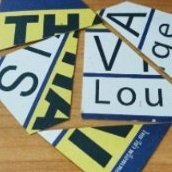AirAsia flight QZ8501 was not cleared to fly route, says Indonesia
-
Recently Browsing 0 members
- No registered users viewing this page.
-
Topics
-
-
Popular Contributors
-
-
Latest posts...
-
77
Pride Month’s Original Message Lost in a Sea of Performative Gestures
You don’t have to look. -
141
My wife wanted me to sign a document any money she gets is hers!
Apparently really stupid ones, at least according to you. You do realize, to anyone really reading, it's evident you are proud to have married a stupid women? I don't know about anyone else but the last person I want as a life partner is someone stupid. Although a lot of the punters on this forum are the type that are perfectly content to hear themselves talk and don't mind if the person they are speaking to doesn't understand a bit of what they are saying. -
29
All disappeared.
You already conveyed what you wanted to say I didn't have to reiterate it,my point was that I personally wouldn't store anything “important“ on the cloud because it is easy pickings for Tom,Dick and Harry. -
44
Humza Yousaf: Immigration gamble by Labour a dangerous mistake
That wasn't part of your contention. You shouldn't really be laughing at a Party that came from nowhere to take 26% of the vote. Don't know how old you are, but Einstein declared madness as doing the same thing over again and expecting different results. Labour / SNP for decades have sent Scotland to rack and ruin, between them. Voting them in again, expecting change, meets Einstein's theory of madness. Did you manage to type that with a straight face ? Or did the Irony completely bypass you ? Dogwhistle and grievance Politics was the SNP speciality. -
23
Trump threatens to cut Musk's government contracts as their public feud escalates.
Musk says Trump is named in Epstein files 06/05/25 Billionaire Elon Musk alleged that President Trump has ties to convicted sex offender and financier Jeffrey Epstein as the part of his growing feud with the president, a fight that boiled over and turned personal on Thursday. “Time to drop the really big bomb,” Musk wrote on X, the social platform he owns. “[Trump] is in the Epstein files. That is the real reason they have not been made public.” Minutes later, he followed up: “Mark this post for the future. The truth will come out.” (more) The Hill https://thehill.com/policy/technology/5335453-elon-musk-donald-trump-jeffrey-epstein-files/ -
77
Pride Month’s Original Message Lost in a Sea of Performative Gestures
Their was no message except : Hey, Look at us! We got our own show now and parade and events just to fluant our insanity!- 1
-

-
-
Popular in The Pub









.thumb.jpeg.d2d19a66404642fd9ff62d6262fd153e.jpeg)



Recommended Posts
Create an account or sign in to comment
You need to be a member in order to leave a comment
Create an account
Sign up for a new account in our community. It's easy!
Register a new accountSign in
Already have an account? Sign in here.
Sign In Now